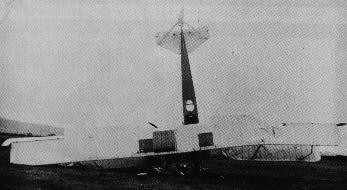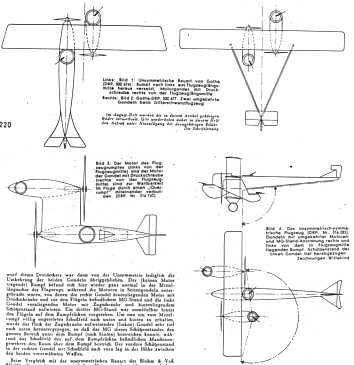|
The first to apply his imagination in the asymmetric aircraft design direction, Hans Burkhard did so as a clever means of reducing drag. Born in Switzerland, Burkhard joined the German Gothaer Waggonfabrik as its chief designer on October 1, 1914. One of the firm's early contracts during WWI was to mass-produce Germany's first twin-engine airplane, the Gotha G.I. In Burkhard's opinion the fuselage and two engine nacelles representated three drag-producing bodies. "I began", he later said, "to think about ways in which the air resistance could be reduced. And I came upon the idea of an asymmetric configuration."
After much tinkering around with different arrangements, Burkhard concluded that the most efficient way to get twin-engine power with two bodies was to mount the fuselage with TRACTOR engine and tail surfaces to the left side while the right side would have a small nacelle incorporating a PUSHER engine and an observer/gunner's cockpit, that extended forward of the tractor propeller.
To compensate for the different power-to-drag coefficients, the nacelle was placed somewhat closer to the wing central axis than was the long fuselage. In addition to reducing drag, the pusher-tractor arrangement, with its overlapping propeller arcs, allowed the engines' thrust lines to be closer together, thereby reducing directional-control problems from torque forces in case one engine malfunctioned.
On September 22, 1915, Burkhard obtained German Patent number 300 676 for his unusual design, but the German government was not interested in pursuing its development. Instead, Berkhard had to return to more conventional designs: G.II, III, IV and V.
By late 1917, the Gotha bombers were becoming increasingly vulnerable to attack by British fighters, and the German military expressed an interest in a bomber of higher performance. Burkhard was eager to prove that his asymmetric concept could produce the world-beater.
The new aircraft, designated G.VI, was built in the winter of 1917-1918.
The construction was almost identical to those of the Go.IV and Go.V. The
wing span was slightly reduced, though. Before it crash landed in the summer
of 1918, the plane made a few successfull flights, proving the asymmetric
conception was vital. Burkhard claimed that the Go.VI flew very well and exceeded
in performance its conventional predecessors. The slight buffeting of the rear
fuselage was to be neutralized by utilizing the ASYMMETRIC TAILPLANE on the
second prototype.
The war ended before the second aircraft was completed. It is believed to
have been destroyed in preference to being turned to the Inter-Allied
Control Comission.
Thanks to
Justo Miranda for the above photo and information.
|





 me anytime!
me anytime! PREV.: Ar.240tl
PREV.: Ar.240tl
 NEXT: Go.P.40
NEXT: Go.P.40
